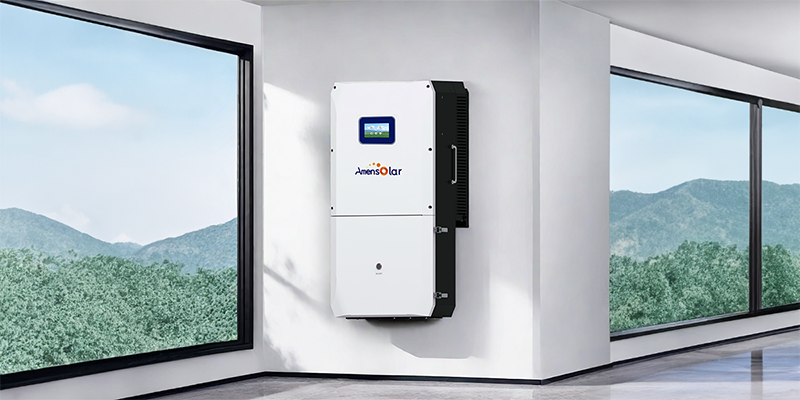When installing a solar power system for your home, one of the most important decisions you’ll need to make is selecting the correct size of the solar inverter. The inverter plays a crucial role in any solar energy system, as it converts the DC (direct current) electricity generated by the solar panels into AC (alternating current) electricity that can be used to power your home. An improperly sized inverter can lead to energy inefficiency, reduced system lifespan, or unnecessary additional costs. Therefore, it’s important to choose the right inverter size based on several factors, including the size of your solar array, energy consumption, and local regulations.
Factors to Consider When Choosing an Inverter Size
- Solar Panel Capacity:
- The first step in selecting the right inverter is determining the total capacity of your solar panel system. Residential solar arrays typically range from 3 kW to 10 kW, depending on available roof space and household energy requirements. A larger solar array will require a larger inverter. For example, if your system is designed to produce 6 kW, your inverter should be able to handle at least this capacity, but usually, an inverter slightly smaller than the array’s rated capacity is chosen to ensure optimal efficiency. For instance, if you have a 6 kW system, an inverter rated between 5 kW and 6 kW would generally be ideal.
- Energy Consumption:
Another important factor is your household’s average energy consumption. Your daily energy usage will influence the inverter size required for optimal energy conversion. If your home uses a lot of electricity, such as running air conditioning systems, electric heaters, or multiple appliances, you’ll need a larger inverter to handle the increased load. Typically, a small household with moderate energy usage may need a 3 kW to 5 kW inverter, while larger homes with higher energy demand might require an inverter rated between 6 kW to 10 kW. It’s essential to assess your typical monthly electricity consumption (measured in kWh) to estimate your needs accurately. - Over-sizing vs. Under-sizing:
Choosing the right size of inverter is all about striking a balance between over-sizing and under-sizing. If the inverter is too small, it may not be able to convert all the energy produced by the solar panels, leading to lost potential energy and inefficiency. On the other hand, an oversized inverter can lead to higher upfront costs and lower overall efficiency because inverters are most efficient when operating within a specific range of their capacity. Generally, the inverter should be sized close to, but slightly below, the capacity of the solar array to maximize efficiency without overspending. A common practice is to select an inverter that is around 10-20% smaller than the rated capacity of the solar panels. - Peak Power Output:
Solar inverters have a maximum rated output capacity. However, during peak sunlight hours, your solar panels may generate more electricity than the inverter is rated to handle. It’s important to choose an inverter that can manage occasional overproduction of electricity, especially during clear, sunny days when solar generation is at its highest. Some modern inverters are designed to handle this peak load without damage, using features like peak power tracking or overload protection. Therefore, while the inverter size should match your system’s capacity, you should also consider its ability to handle short bursts of excess energy during peak production.
Conclusion
Choosing the right inverter size is essential for ensuring that your solar power system operates efficiently and provides long-term benefits. Factors like solar panel capacity, your home’s energy consumption, and the inverter’s ability to handle peak output all play a role in determining the ideal inverter for your system. A well-sized inverter ensures maximum energy conversion, reduces system strain, and helps lower electricity costs over time. Always consult with a professional solar installer to ensure that your inverter is appropriately sized to meet your specific needs and local regulations. By carefully considering these factors, you can maximize the return on investment for your solar system while contributing to a greener, more sustainable future.
Post time: Dec-20-2024









